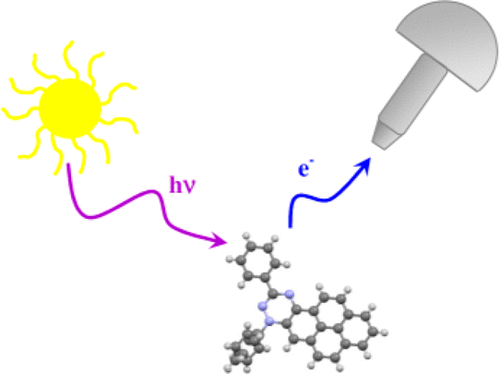当前位置:
X-MOL 学术
›
Acc. Chem. Res.
›
论文详情
Our official English website, www.x-mol.net, welcomes your
feedback! (Note: you will need to create a separate account there.)
Nanoscale Studies of Organic Radicals: Surface, Interface, and Spinterface
Accounts of Chemical Research ( IF 16.4 ) Pub Date : 2018-02-21 00:00:00 , DOI: 10.1021/acs.accounts.7b00612 M. Benedetta Casu 1
Accounts of Chemical Research ( IF 16.4 ) Pub Date : 2018-02-21 00:00:00 , DOI: 10.1021/acs.accounts.7b00612 M. Benedetta Casu 1
Affiliation

|
In the last decade technology has brought significant changes to our lives, including new habits and a new view on social relationships. These technological innovations are based on several factors, one of which is miniaturization. This was made possible also due to the discovery and synthesis of new materials with characteristics at the nanoscale that are designed for specific purposes. This “on purpose” approach, joined to the development of preparation and growth methods, has led to use of thin films rather than bulk materials in devices. Using thin films makes devices easier to produce, and using films for coating protects the devices and gives specific properties to surfaces. For several decades thin films, surfaces, and interfaces have been intensively investigated. Indeed, device performances rely on the optimized match of thin films of different natures, such as organic and inorganic semiconductors and metals for contacts. Surprisingly, in comparison, little attention has been devoted to the deposition of organic radicals on a substrate. This might be because these materials are considered not stable enough for evaporation.
中文翻译:

有机自由基的纳米尺度研究:表面,界面和Spinterface
在过去的十年中,技术为我们的生活带来了重大变化,包括新的习惯和对社会关系的新见解。这些技术创新基于多种因素,其中之一就是小型化。由于发现和合成了具有特殊用途的纳米级特性的新材料,这也使之成为可能。这种“有目的”的方法与制备和生长方法的发展相结合,导致在设备中使用薄膜而非散装材料。使用薄膜可以使设备更易于生产,而使用薄膜进行涂层可以保护设备并赋予表面特殊的性能。几十年来,人们对薄膜,表面和界面进行了深入研究。确实,设备性能取决于不同性质的薄膜(例如有机和无机半导体以及用于接触的金属)的最佳匹配。令人惊讶地,相比之下,很少有注意力放在有机自由基在基底上的沉积上。这可能是因为这些材料被认为不够稳定,无法蒸发。
更新日期:2018-02-21
中文翻译:

有机自由基的纳米尺度研究:表面,界面和Spinterface
在过去的十年中,技术为我们的生活带来了重大变化,包括新的习惯和对社会关系的新见解。这些技术创新基于多种因素,其中之一就是小型化。由于发现和合成了具有特殊用途的纳米级特性的新材料,这也使之成为可能。这种“有目的”的方法与制备和生长方法的发展相结合,导致在设备中使用薄膜而非散装材料。使用薄膜可以使设备更易于生产,而使用薄膜进行涂层可以保护设备并赋予表面特殊的性能。几十年来,人们对薄膜,表面和界面进行了深入研究。确实,设备性能取决于不同性质的薄膜(例如有机和无机半导体以及用于接触的金属)的最佳匹配。令人惊讶地,相比之下,很少有注意力放在有机自由基在基底上的沉积上。这可能是因为这些材料被认为不够稳定,无法蒸发。











































 京公网安备 11010802027423号
京公网安备 11010802027423号